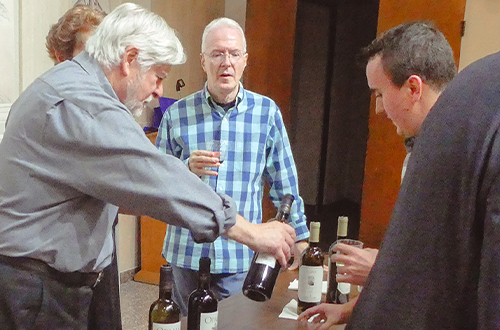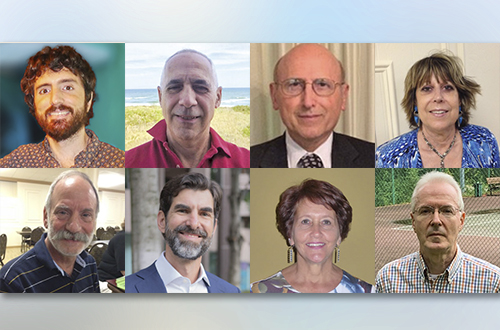-
Castel di Sangro

By Nancy DeSanti
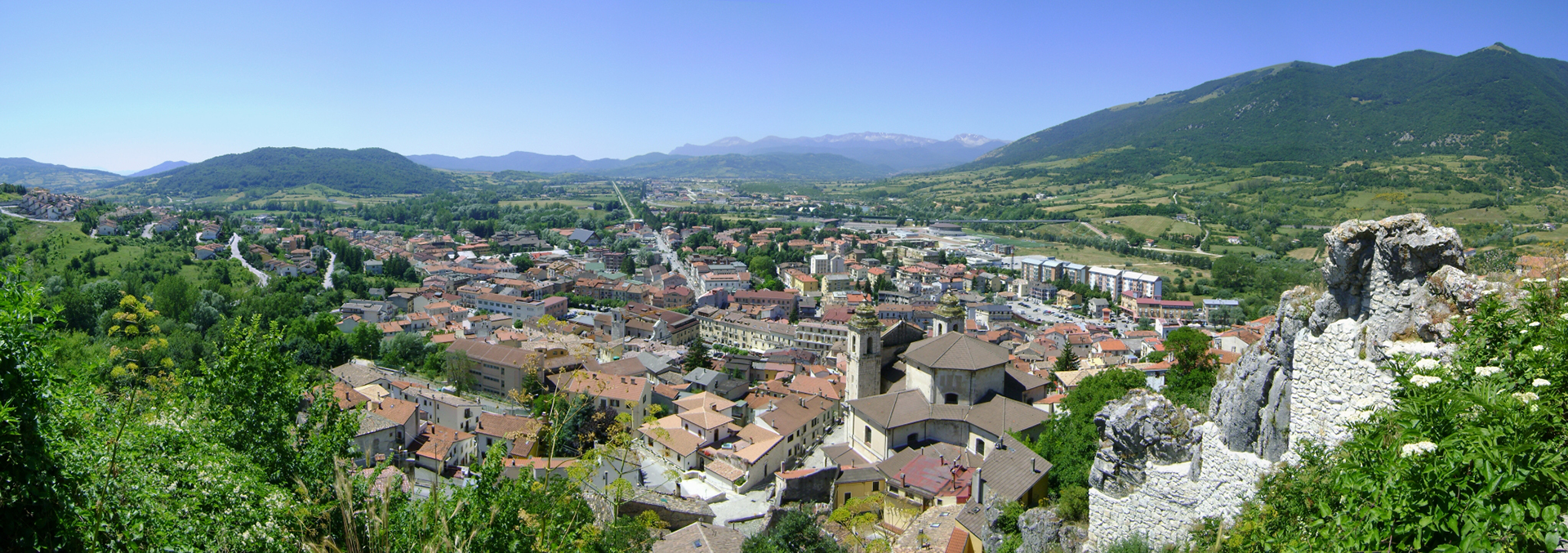
Panoramic view of Castel di Sangro
Credit: WikipediaProvince of L’Aquila, Region of Abruzzo
The beautiful small town of Castel di Sangro is located in the province of L’Aquila about 150 kilometers east of Rome. It is the main city of the area of Alto Sangro e Altopiano delle Cinque Miglia. The town is located near the Sangro River in a valley in the Apennine Mountains. It has approximately 6,461 inhabitants, known as Castellani.
Castel di Sangro is known as a charming town that boasts a rich history and a breathtaking natural landscape. Its origins can be traced back to medieval times when it was established as a defensive outpost.
Over the centuries, the town experienced various rulers, including the Lombards and the Kingdom of Naples, shaping its unique character and architecture. Castel di Sangro was known to the Romans as Aufidena, a city of the Samnites.The town gained some popularity in the mid-1990s thanks to the exploits of the local soccer club, Castel di Sangro Calcio. In 1996, Castel di Sangro’s remarkable rise from obscurity even prompted an American writer, Joe McGinniss, to spend an entire season with the club. While living and eating with the squad daily, he penned his book, “The Miracle of Castel di Sangro.” His book describes how the team made it up through five leagues to get to Serie B, the second-highest league in Italian soccer.
The town is surrounded by lush greenery, rolling hills, and the Apennine Mountains. This makes it an excellent base for outdoor activities like hiking, cycling, and birdwatching. The Parco Nazionale d’Abruzzo, Lazio, e Molise is nearby, offering more opportunities for nature lovers.
Lately, the town has been in the news as the hometown base of famed Italian chef, Niko Romito. Dozens of new Alt Stazione del Gusto restaurants are being planned along Italian roadways — with a menu by Romito, who has several Michelin-starred restaurants to his name.
Along with electric charging stations, the diner takes an eco-conscious approach with the help of Enilive. Solar panels produce most of Alt’s energy, and there are air and water filtration and recycling systems in place. In the kitchen, Romito follows standardized practices to ensure quality, which includes the bombe — they are crafted in Romito’s lab in Abruzzo, frozen, and transported to Alt, where they are heated and filled upon customer request, instead of sitting out on a counter all day.
Alt’s staff is made up of students trained at the Accademia Niko Romito, the chef’s vocational culinary school. With a pay-it-forward ideology, Romito’s team expects to train the next generation of Alt staffers.
The new Alt Stazione del Gusto in Rome is now open daily from 7 a.m. to 10 p.m., and it will soon be joined by additional Alt Stazione del Gusto outposts on all of Italy’s autostrade, with a plan to open 100 restaurants over the next four years.
What to See
- Basilica of Santa Maria Assunta
- Torre Medievale, a medieval tower
Important Dates
- August 27 — Feast of San Rufo
Italiano

Tradotto da Ennio Di Tullio
Provincia dell’Aquila, Regione Abruzzo
La bellissima cittadina di Castel di Sangro si trova nella provincia dell’Aquila a circa 150 chilometri a est di Roma. È il capoluogo della zona dell’Alto Sangro e dell’Altopiano delle Cinque Miglia. Il paese è situato nei pressi del fiume Sangro in una valle dell’Appennino. Ha circa 6.461 abitanti, detti Castellani.
Castel di Sangro è conosciuta come una ridente cittadina che vanta una ricca storia e un paesaggio naturale mozzafiato. Le sue origini si possono far risalire al periodo medievale quando venne istituito come avamposto difensivo.
Nel corso dei secoli la città conobbe diverse dominazioni, tra cui i Longobardi e il Regno di Napoli, che ne modellarono il carattere e l’architettura unici. Castel di Sangro era conosciuto dai romani come Aufidena, una città dei Sanniti.
La città ha guadagnato una certa popolarità a metà degli anni ‘90 grazie alle imprese della squadra di calcio locale, il Castel di Sangro Calcio. Nel 1996, la straordinaria ascesa di Castel di Sangro dall’oscurità spinse addirittura uno scrittore americano, Joe McGinniss, a trascorrere un’intera stagione con il club. Vivendo e mangiando quotidianamente con la squadra, ha scritto il suo libro “Il miracolo di Castel di Sangro”. Nel suo libro descrive come la squadra ha superato cinque campionati per arrivare alla Serie B, il secondo campionato più importante del calcio italiano.
La città è circondata da una vegetazione lussureggiante, dolci colline e gli Appennini. Ciò lo rende una base eccellente per attività all’aperto come escursionismo, ciclismo e birdwatching. Il Parco Nazionale d’Abruzzo, Lazio, e Molise si trova nelle vicinanze e offre più opportunità per gli amanti della natura.
Ultimamente, la città è stata nelle notizie come la città natale del famoso chef italiano Niko Romito. Decine di nuovi ristoranti Alt Stazione del Gusto sono in progettazione lungo le strade italiane, con un menu firmato Romito, che ha diversi ristoranti stellati Michelin al suo nome.
Insieme alle stazioni di ricarica elettrica, il ristorante adotta un approccio eco-consapevole con l’aiuto di Enilive. I pannelli solari producono la maggior parte dell’energia di Alt e sono presenti sistemi di filtraggio e riciclaggio dell’aria e dell’acqua. In cucina, Romito segue pratiche standardizzate per garantire la qualità, che includono le bombe: vengono realizzate nel laboratorio di Romito in Abruzzo, congelate e trasportate ad Alt, dove vengono riscaldate e riempite su richiesta del cliente, invece di stare sul bancone tutto il giorno.
Lo staff di Alt è formato da studenti formati presso l’Accademia Niko Romito, la scuola professionale di cucina dello chef. Con un’ideologia “paga in avanti”, il team di Romito prevede di formare la prossima generazione di membri dello staff Alt. La nuova Alt Stazione del Gusto di Roma è ora aperta tutti i giorni dalle 7 alle 22, e presto si aggiungeranno altri avamposti Alt Stazione del Gusto su tutte le autostrade italiane, con un piano di apertura di 100 ristoranti nei prossimi quattro anni.
Le attrazioni del luogo:
- Basilica di Santa Maria Assunt
- Torre medievale
Date da ricordare:
- 27 agosto — Festa di San Rufo
March 2024
-
Ururi

By Nancy DeSanti
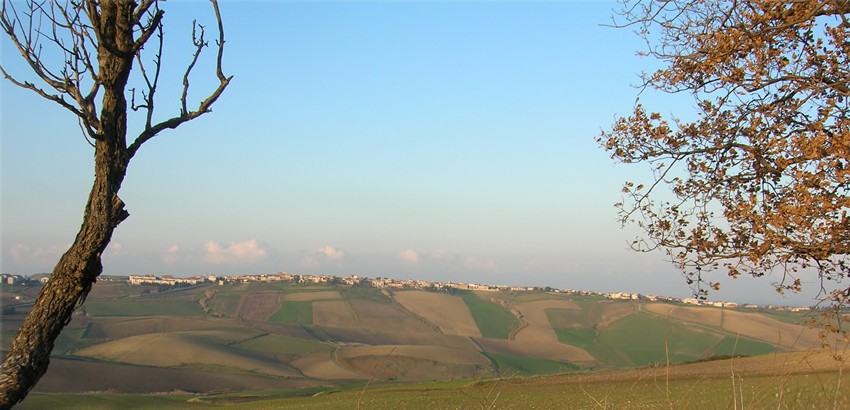
Panoramic view of Ururi
Credit: Wikipedia
Province of Campobasso, Region of Molise
The small town of Ururi is located about 40 kilometers northeast of the provincial capital of Campobasso. It has approximately 2,779 inhabitants, known as Uruesi.
The town, which rises on a small hill along the border with Puglia, was founded in the 16th century by one of the earliest groups of people coming from southern Albania, and it still preserves the arbëreshë language and traditions they brought with them.
Ururi developed in the late 16th century settlement due to Albanian military captain, Teodoro Crescia, who paid the sum of 300 ducats for the territory. Until 1583, it was populated by many Albanian families.
There are records of a Roman “Casale Aurora” and later of a Benedictine monastery. However, the exact locations of the Casale and the monastery are unknown, although they were most likely the earliest settlements of Ururi. Shortly before 1500, when it was a fiefdom of the Loritello family, Albanians had already settled in Casale Aurora and the name began to change from Aurora to Urure.
The town was highly dependent on agriculture and on the transumanza economy based on the seasonal migrations of shepherds. It underwent a crisis from the late 19th century, when large communities of residents relocated to Canada and northern Italy.
The townspeople keep very strong community ties and solidarity with one another, being twice emigrants — once from Albania and a second time from Molise — and it is common when they meet to hear the traditional Albanian salute “ghjaku shprjshur,” meaning “our dispersed blood.”
In the summertime, a typical tradition is a re-enactment known as the “race of wagons” (Corsa dei Carri), an important event in the local folklore.
What to See
- Church of Santa Maria delle Grazie, built in 1731 on the site of a previous church.
Important Dates
- May 3 — Feast of Legno della Croce (Wood of the Cross)
Italiano

Tradotto da Ennio Di Tullio
Provincia di Campobasso, Regione Molise
La piccola cittadina di Ururi si trova a circa 40 chilometri a nord-est della capitale provincial di Campobasso. Ha circa 2.779 abitanti, conosciuti come Uruesi.
Il paese, che sorge su una piccola collina lungo il confine con la Puglia, fu fondato nel XVI secolo da uno dei primi gruppi di provenienti dall’Albania meridionale, e conserva ancora la lingua e le tradizioni arbëreshë che questi portarono con sé.
Ururi si sviluppò nell’insediamento della fine del XVI secolo grazie al capitano militare Albanese, Teodoro Crescia, che pagò per il territorio la somma di 300 ducati. Fino al 1583 fu popolata con numerose famiglie albanesi.
Si ha notizia nella zona di un “Casale Aurora” romano e successivamente di un monastero benedettino. Ma l’ubicazione esatta del Casale e del monastero non è nota, anche se molto probabilmente furono i primi insediamenti di Ururi. Poco prima del 1500, quando era feudo della famiglia Loritello, a Casale Aurora si erano già insediati gli albanesi e il nome cominciò a cambiare da Aurora a Urure.
Il paese era fortemente dipendente dall’agricoltura e dall’economia della transumanza basata sulle migrazioni stagionali dei pastori. Subì una crisi a partire dalla fine del XIX secolo, quando grandi comunità di residenti si trasferirono in Canada e nel nord Italia.
Gli abitanti mantengano rapporti comunitari molto forti e solidali tra loro, essendo due volte emigranti – una volta dall’Albania e una seconda volta dal Molise – ed è comune quando si incontrano per ascoltare il tradizionale saluto albanese “ghjaku shprjshur, “che significa “il nostro sangue disperso”.
Nel periodo estivo, viene rievocata una tipica tradizione conosciuta come la “Corsa dei Carri”, evento importante nel folklore locale.
Le attrazioni del luogo:
- Chiesa di Santa Maria delle Grazie, edificata nel 1731 sul sito di una precedente chiesa.
Date da ricordare:
- 3 maggio — Festa del Legno della Croce (Wood of the Cross)
Sources: https://en.wikipedia.org/wiki/Ururi
https://www.italyheritage.com/regions/molise/province-campobasso/ururi.htm
March 2024
-
Siamo Una Famiglia

The Passing of Joseph D’Andrea
By Maria D’Andrea-Yothers
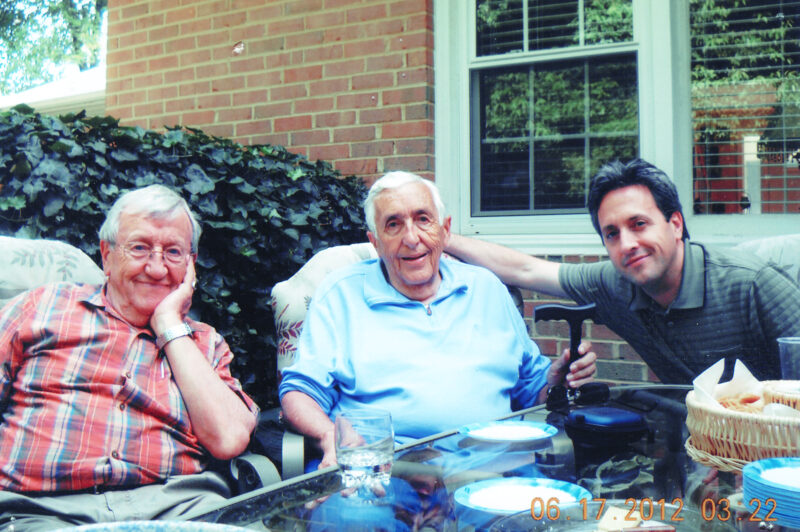
Joseph D’Andrea (center) sharing a happy moment with his brother, Lucio (left) and nephew Paul.
Credit: Courtesy of the D’Andrea family.The Society mourns the passing of Joseph D’Andrea, brother of founding member, Lucio D’Andrea, and a strong advocate for the creation of the Abruzzo Molise Heritage Society in the Washington, DC, area. Joseph passed away on December 22, 2023, at 94 years of age. His brother Lucio, Lucio’s daughter, Maria, and son-in-law, Sam, were grateful that they were able to visit Joe at the Marion Manor Care Nursing Home on December 17.
Joseph, along with Lucio and their mother, Candida, left Roccamandolfi, in the province of Isernia, when he was 18 years old. Joseph’s father, Gaetano, was in the United States, having arrived several years earlier to make a life and home for his family, which settled in McKees Rocks, Pa. Joseph was an avid scholar, teacher, President of the Pennsylvania State Teachers’ Association, and, later in life, Honorary Vice Counsel to Italy for Western Pennsylvania. He returned to Roccamandolfi where he was recognized for his thorough and robust research into the Monangah, West Virginia, Mining Disaster, which occurred on December 6, 1907. This event is the worst mining disaster in American history, as it claimed the lives of 362 miners, the majority of whom were immigrants — 87 of whom were from the region of Molise. In 2007, to commemorate the 100th anniversary of the explosion, the region of Molise presented a bell to the town of Monongah. Italians arrive to honor immigrants killed in 1907 Monongah mine blast | Pittsburgh Post-Gazette.
Joseph was the beloved husband of the late Gloria Bianchi. He is survived by his daughter, Anne, and his brother, Lucio, Lucio’s wife Edvige, and numerous nieces and nephews. Obituary for Joseph F. D’Andrea | Copeland Funeral Homes.
Good Start to the Holiday Season
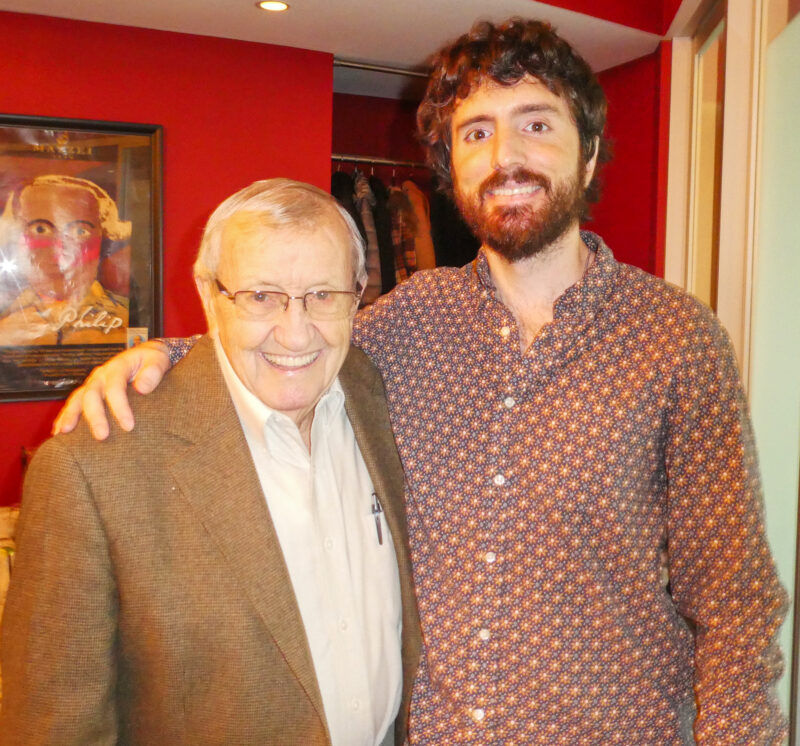
Founding member and first AMHS President, Lucio D’Andrea (left), with incoming AMHS President, Chris Renneker, at the Society’s holiday lunch at Osteria da Nino on December 3, 2023. The lunch was attended by 35 members and friends, all of whom enjoyed a festive day of food and friendship. Credit: Maria D’Andrea-Yothers
Milestone Birthday for Founding Member

Edvige D’Andrea celebrated her 90th birthday on Saturday, November 18, with 50 members of her family including six children and spouses, seven grandchildren, and one great-grandchild. Also in attendance were many cousins who traveled from Pennsylvania to join in the festivities. Buon Compleanno Edvige!
Credit: Sam Yothers
March 2024
-
AMHS Membership
By Rico Allegrino, 2nd Vice President-Membership and Lynn Sorbara, former 2nd Vice President-Membership
New Members Welcome to our New Members:
Teresa Black, Barry Shawley, and Tommaso AmmazzalorsoBirthdays Compleanni a Gennaio
Carmela Ventresca, January 2; John Iazzetti, January 4; John Iademarco, January 5; Philip Micali, January 7; Americo Allegrino, January 8; Judy Damiani, January 11; Abraham Avidor, January 12; Carla DiBlasio, January 17; Bess DiTullio and Karen Kiesner, January 24; and Nonna Noto, January 26.Compleanni a Febbraio
Roberto DiTullio, February 2; Rose Silvestri Canahl, February 5; Robert Baldassari, February 7; Carmen Ciccione, February 8; Louis Sacchetti and Mary Ellen Allegrino, February 9; Stephan Carrier and Mark Lino, February 10; Julie Finigan-Dal Forno, February 14; William Sansalone, February 16; Elisa DiClemente, February 18; Lana Nardella and Joseph DiBlasio, February 19; Francesco Isgro and Tom Sweeney, February 21; Diana DelGrosso, February 23; Lourdes Tinajero, February 25; Michele LaVerghetta, February 27; and Mary Ann Re, February 28.Anniversaries Anniversari a Gennaio
None.Anniversari a Febbraio
Sam & Maria (D’Andrea) Yothers, February 11; and Michael & Dena DeBonis, February 15.Membership Information Category # of Persons
Associate (Couple): 3 x 2 = 6
Associate (Individual): 31
General (Couple): 42 x 2 = 84
General (Individual): 74
Honorary: 8
Scholarship: 2
Student: 5
Total Membership: 210
March 2024


